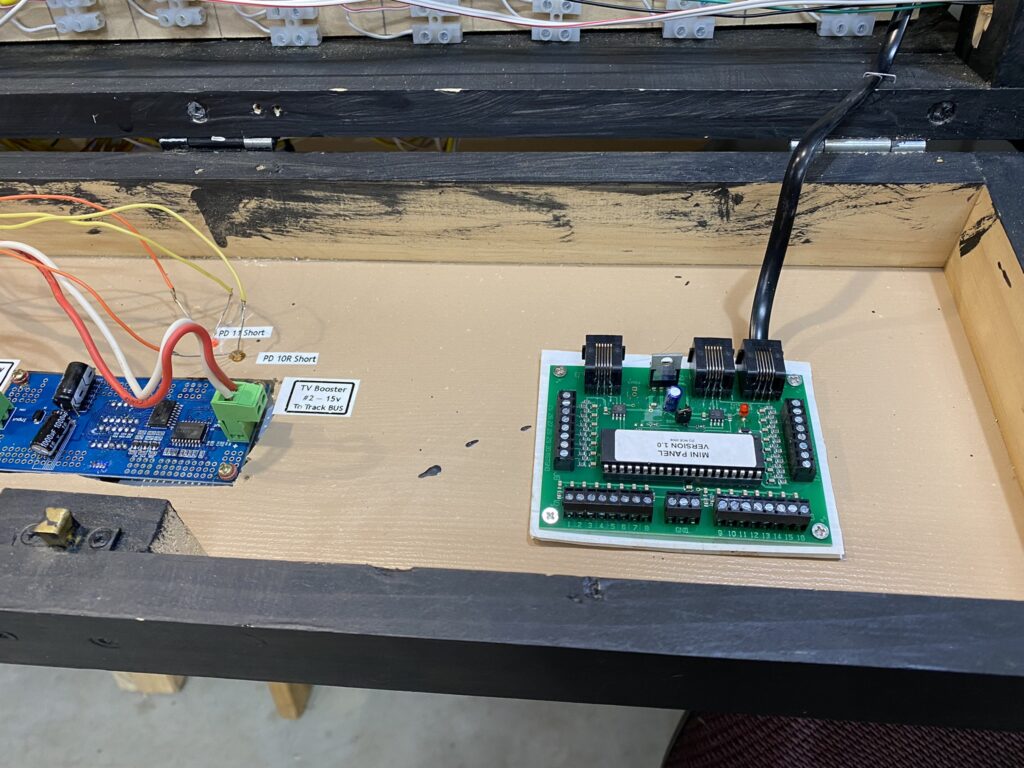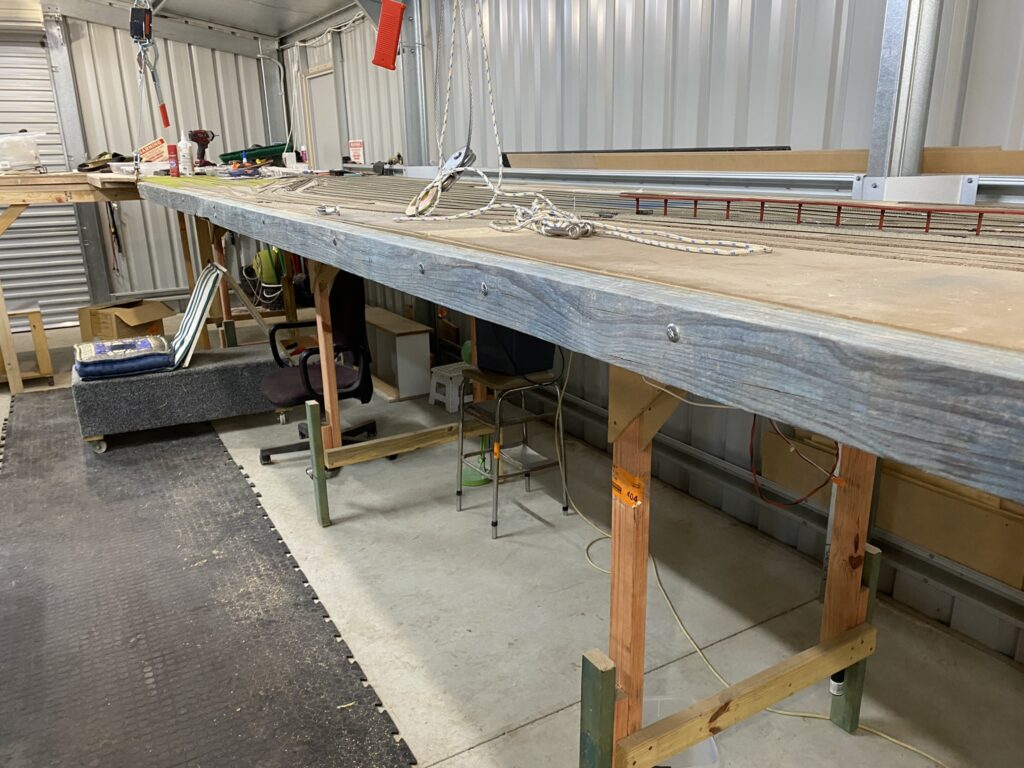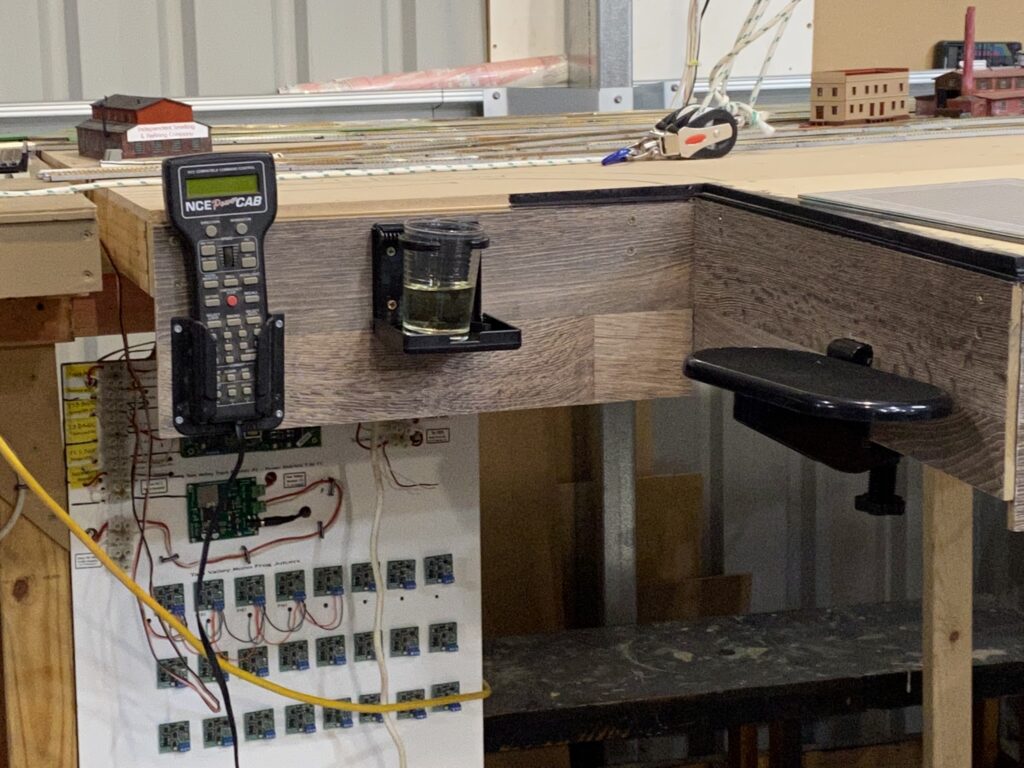N Scale
Recording the progress of building the Denver’s RailRoads N Scale layout
All genuine posts are welcomed and will be acknowledged. Please submit your first post by email to: dennis@denversrailroads.com
Building the Rio Grande line to Glenwood Springs
A while ago I finished building the UP/CB&Q/AT&SF/C&S/ROCK main line North and East from Denver to the return loop at the end of the layout. By and large the track will be concealed from viewers by way of either a gully or a tunnel, so it is not very exciting, but its a way of moving trains in and out of staging (the return loop) for the Denver’s RailRoads listed.
However the main attraction is going to be the Denver & Rio Grande Western main line thru the Moffat Tunnel from Denver to Glenwood Springs. This line will provide passing sidings, industries and spectacular scenery, including the Flatirons, the Moffat Tunnel and Byers and Gore Canyons, together with mountain grades and eventually a branch to Craig.
Work recently commenced as can be seen in the following photographs.
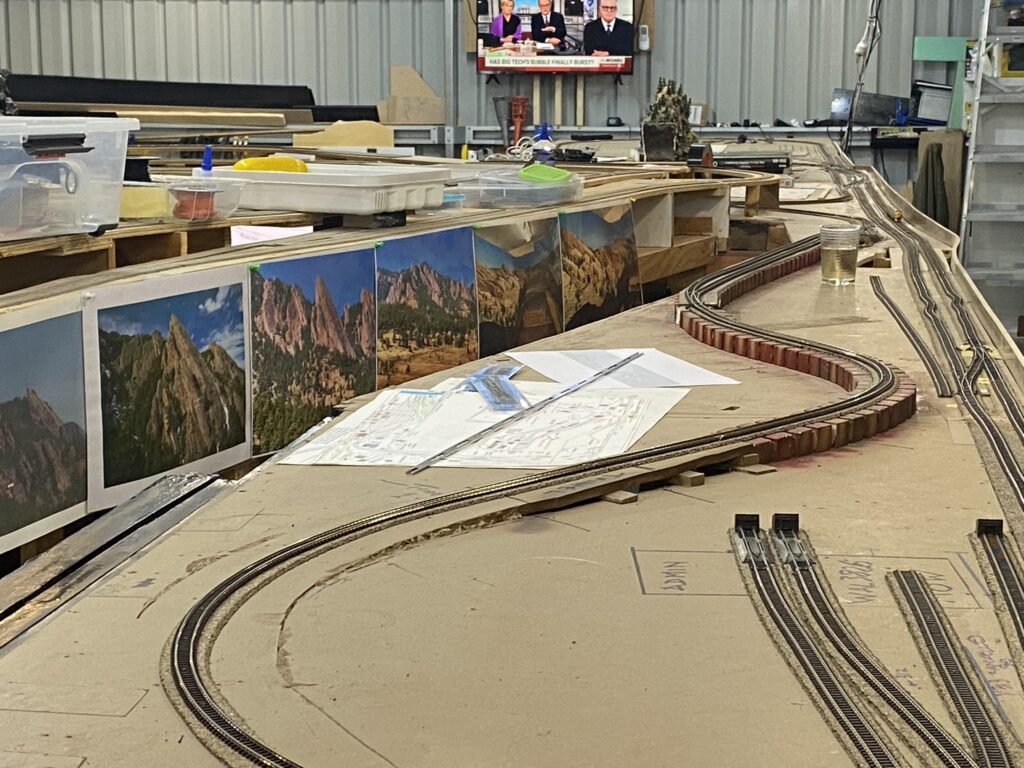
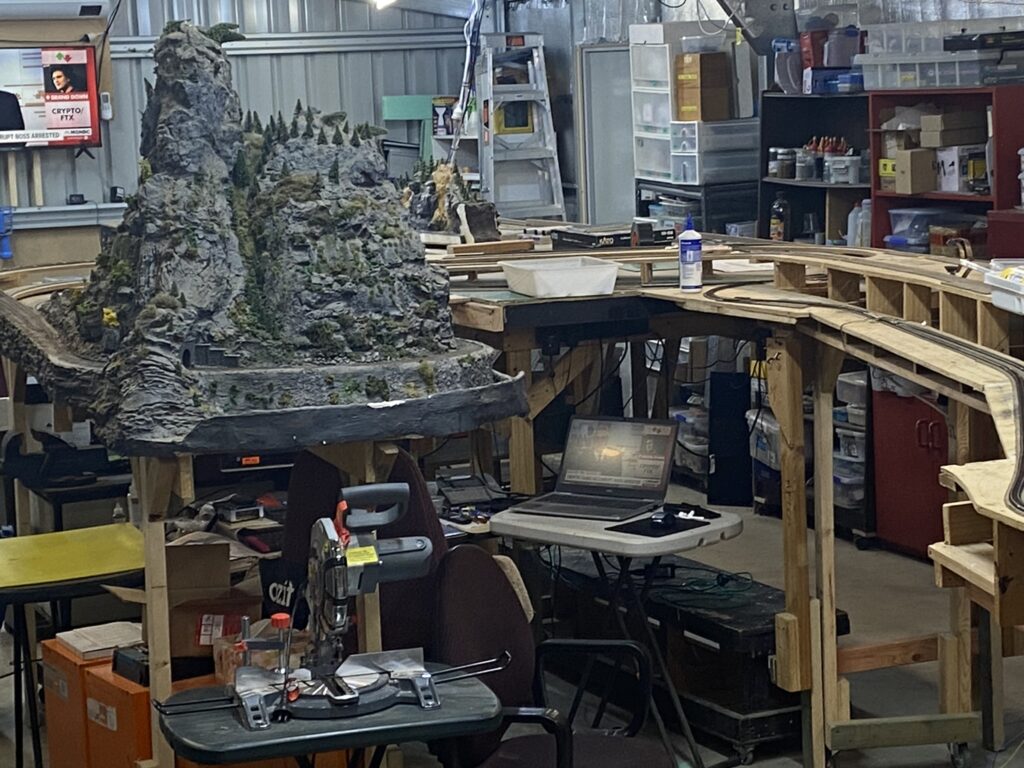



That’s it for now. The next job is to lay a crossover ahead of Granby Station and spurs to the Granby Sawmill, Independent Propane Co and Granby Auto Parts, all existing industries that have decided to add a connection to the Rio Grande Railroad in order to improve the efficiency of their operations.
What’s on my Workbench
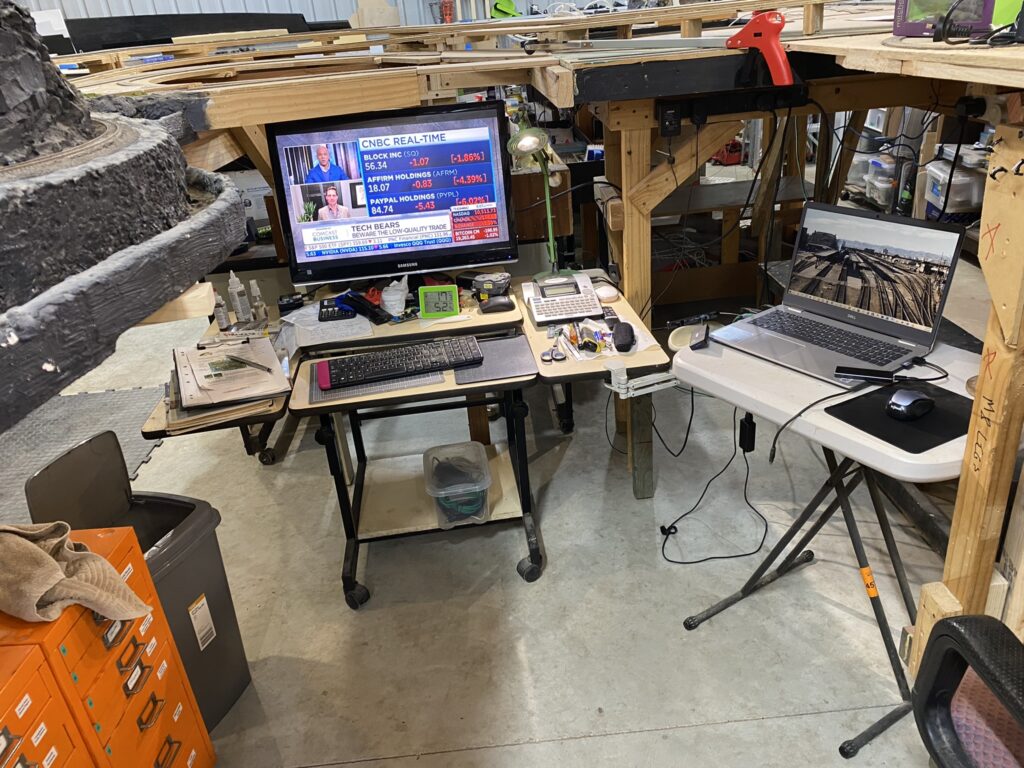



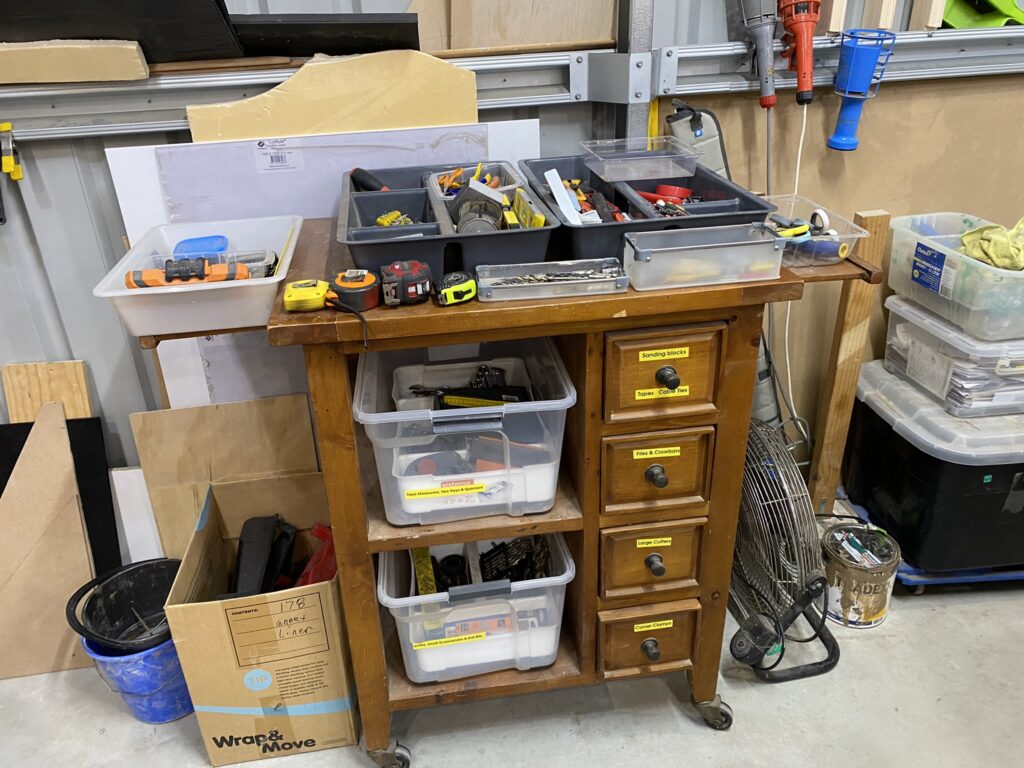
Another “Final” Track Plan
A while ago I decided to replace the East Denver Belt Line on Module 8 with the Rio Grande (D&RGW) main line from Denver to the East Portal of the Moffat Tunnel which previously had been mainly hidden trackage. So far so good.
However, I really did want to keep the industries of The East Denver Belt Line (aka Northwestern Terminal Railroad or NTR), a sprawling group of Denver industries between Utah Jct. at the north end of the D&RGW North Yard and Commerce City as can be seen in the map shown at Denver-Belt-Line-Map.pdf (denversrailroads.com). However, many of these industries were not established in the 1950’s and 60’s so I am really only concerned with those industries that were in existence back when Denver’s RailRoads is set (1947-1967), including:
- Conoco (Continental Oil) Refinery. Built 1930.
- Brannan Sand & Gravel. Est. 1906. Manufactures Aggregates, Asphalt Paving and Concrete.
- Weyerhaeuser Distribution Center. Est. 1921. Suppliers of building materials.
- Eaton Metal Products. Est. 1924. Fabricates a wide variety of vessels & tanks.
- Kopper’s. Est. 1923. Manufactures treated wood products
- Central Fibre Products Co. Est. 1931. Manufactures of packaging solutions.
- Denver Union Stockyards including:
- Denver Union Stock Yard Exchange Building. Built 1881;
- The Colorado Packing and Provisions Company, aka Armour & Company. Built 1917;
- Swift & Company, who began operating in the McConnell Building in 1951.
In the event it was not too difficult a task as the Rio Grande North Yard is on the west side of Denver and the Union Pacific’s 36 St. Yard and Pulman Yard were on the east side. As the East Denver Belt Line ran from the west to the east planting these industries between the two made geographical sense and will create a natural scene divider. I had no choice but to use modelers license and extend the Belt Line, with three of the industries, into Burlington territory where there was some free real estate.
If you are familiar with Denver city, you will know that the CB&Q 38 St. Yard is also located between the D&RGW and UP yards. But apart from the lace of space it would be one yard too many for a model railroad. Consequently, the CB&Q will have to share space with subsidiary Colorado & Southern’s Rice Yard which in the 1950’s was located adjacent to Denver Union Station.
To view the latest “final” track plan go to document (denversrailroads.com).
A Change of Direction
I had planned to complete the South Denver module 1, aka as the Joint Line Return Loop & Burnham Shops, to operational stage. Unfortunately, the size of the wiring job has somewhat overwhelmed me, largely because:
- I wired all of the block detectors with the baseboard in a “pop-up” vertical position and did not take into consideration access after it was lowered back onto it’s normal horizontal position.
- Wiring individual DCC accessory decoders for 40 turnouts is a long soul-destroying job.
- I use solid wire which has many advantages. The one major disadvantage is that the one strand can easily break.
- For economic reasons most of the turnouts have been re-used from previous layouts. This has led to questionable trackwork.
After a period of indecision, while I spent my time testing Locomotives on the new test loop of track (see first photo below) I decided that I would build west from the test loop to the Grand Junction return loop.
What I have done, and can be seen in the following photographs, is build the CB&Q and UP main line from the test track loop all the way to a single loop of track, being part of the Grand Junction loop. I have installed all of the main line turnouts as I went so that I can build on from the main line as required.



The UP main line is on the left and the CB&Q and Rio Grande main lines are on the right.
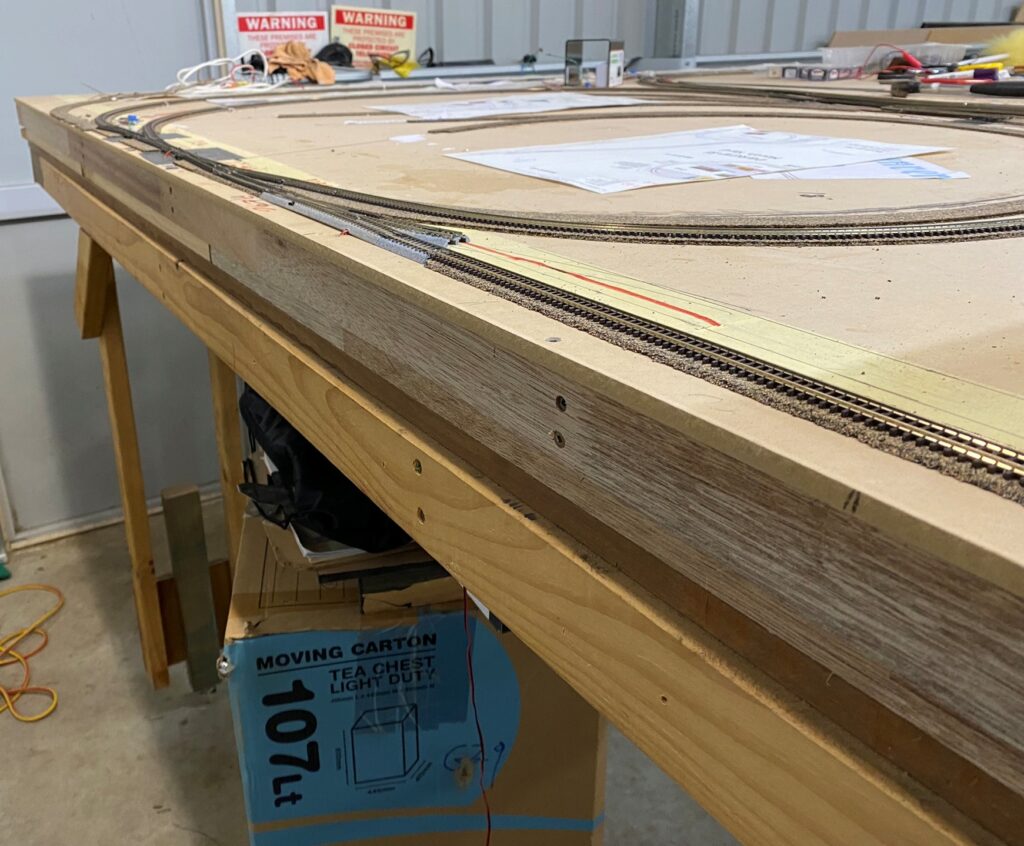
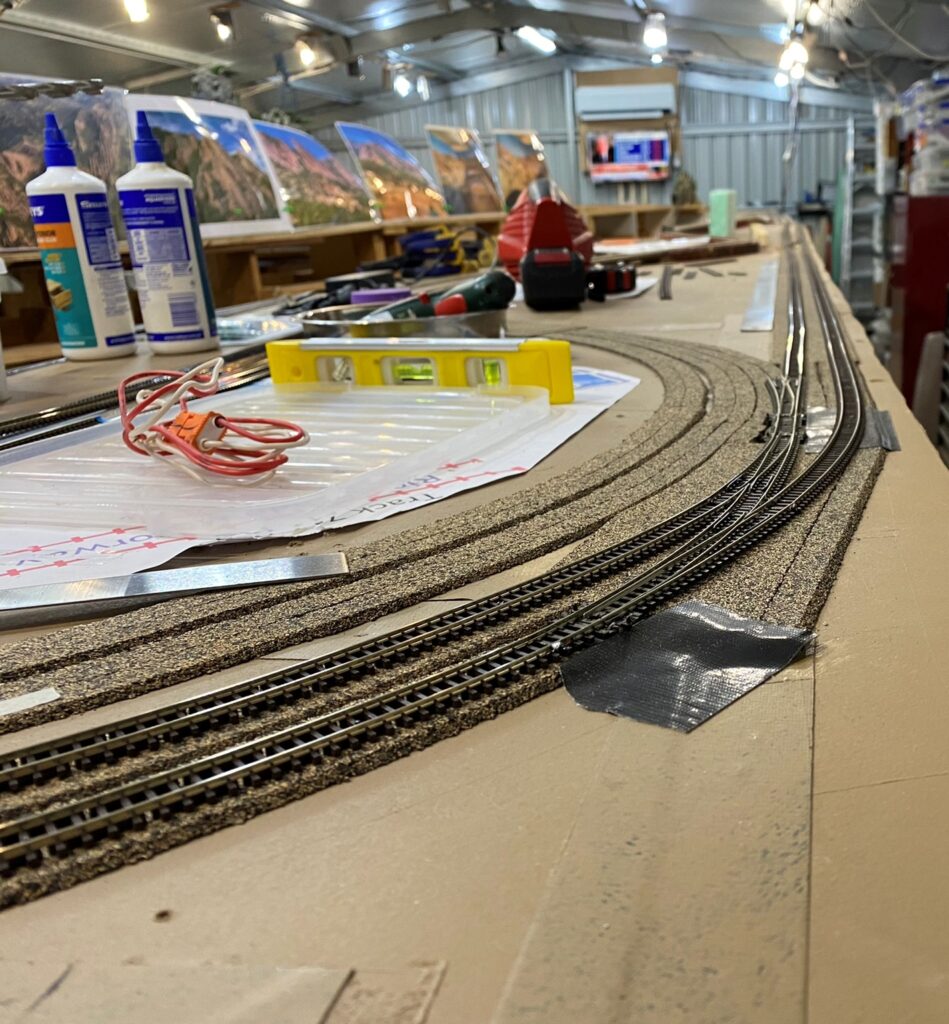
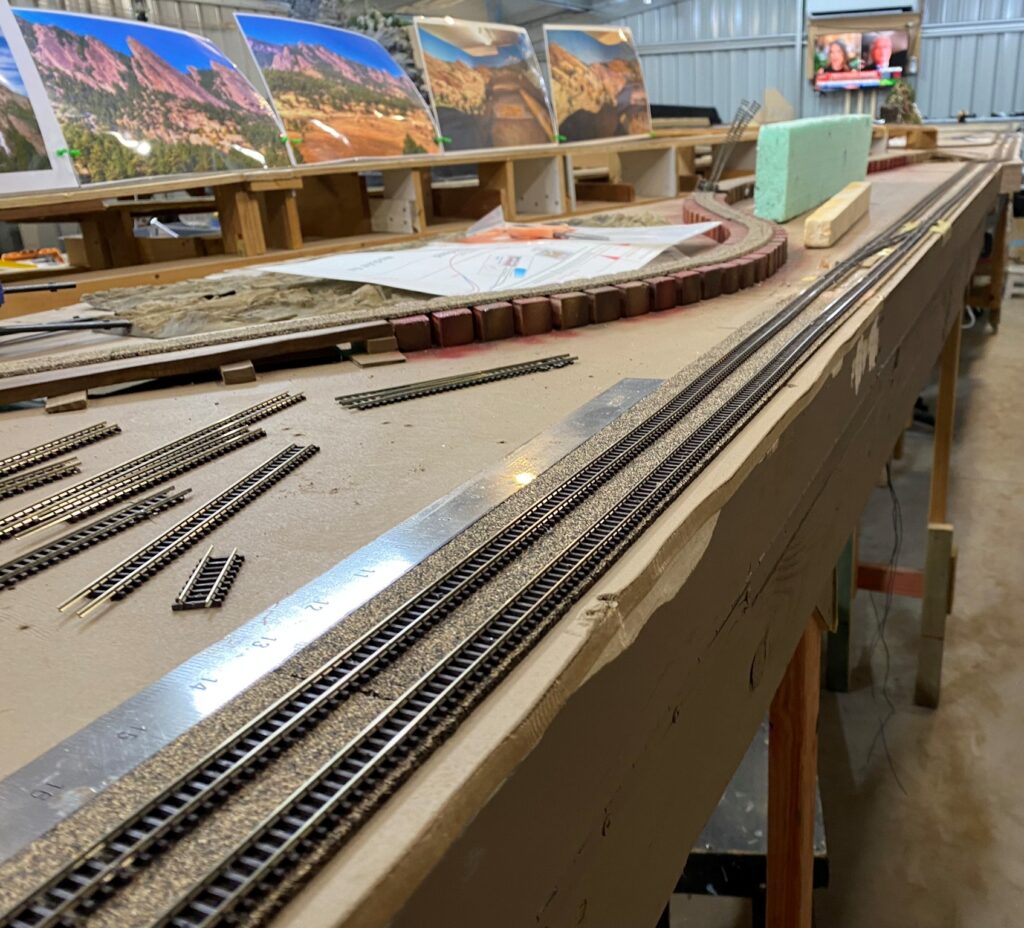





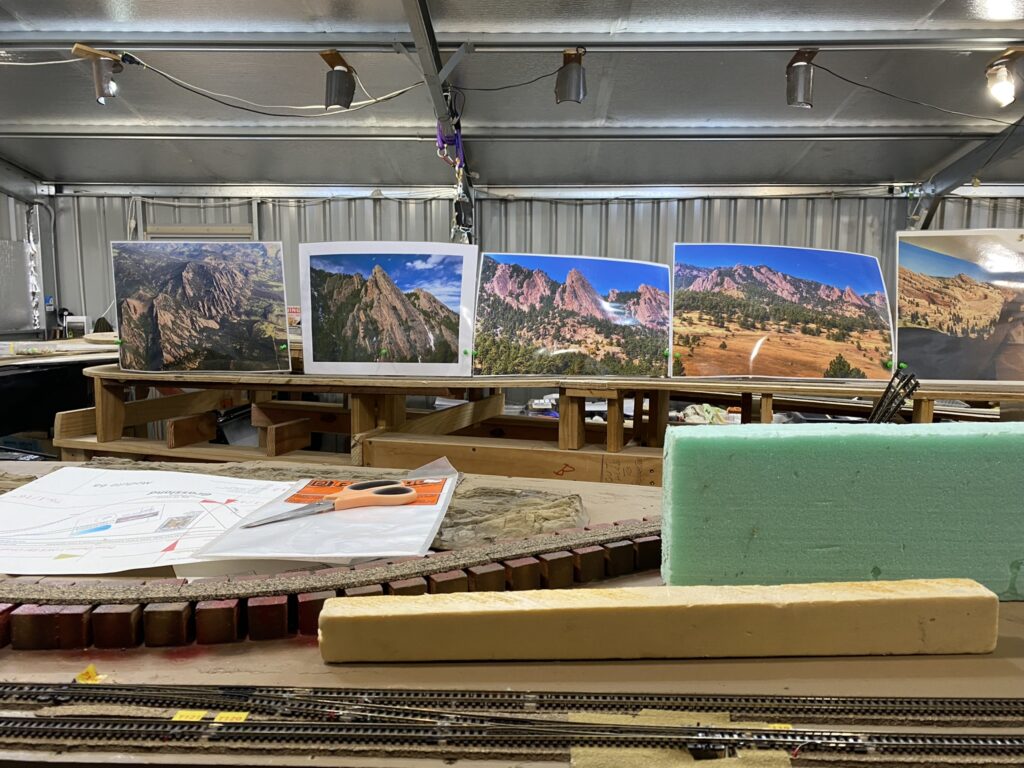
I add some spray can paint
The Woodland Scenics risers are great but I hate how white they look. I had brush painted the sub-roadbed but I needed to spray paint the insides of the risers to remove the “white” look. With hindsight I should have sprayed a diluted brown or black wash, which would have been a lot cheaper than rattle cans.

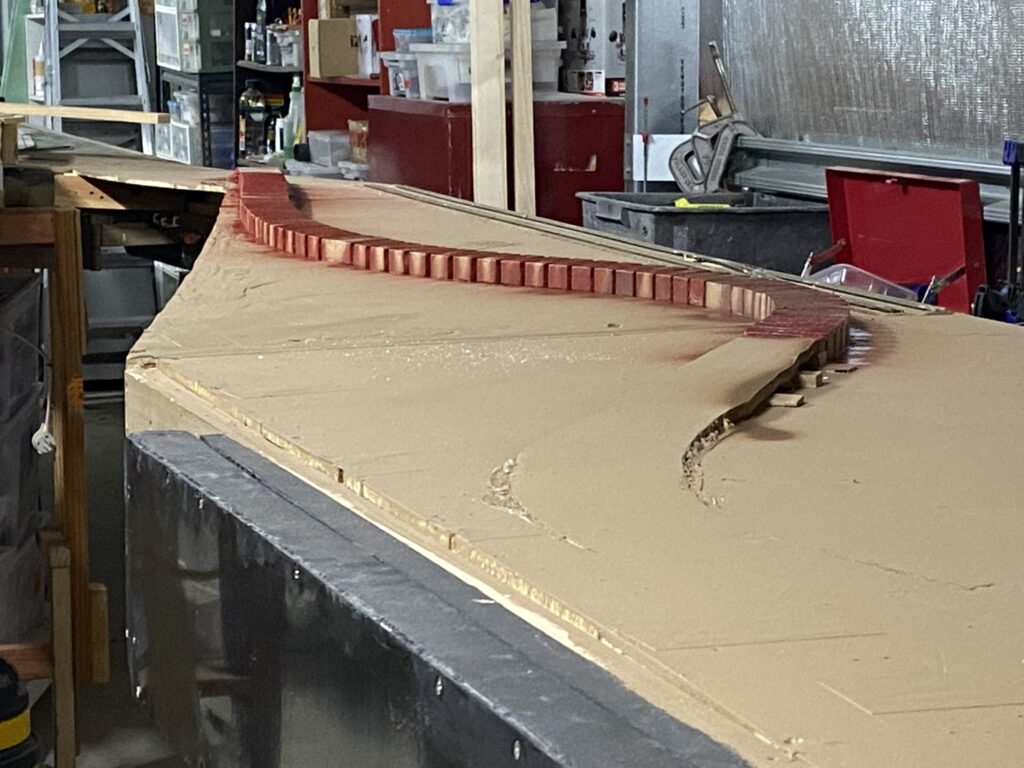
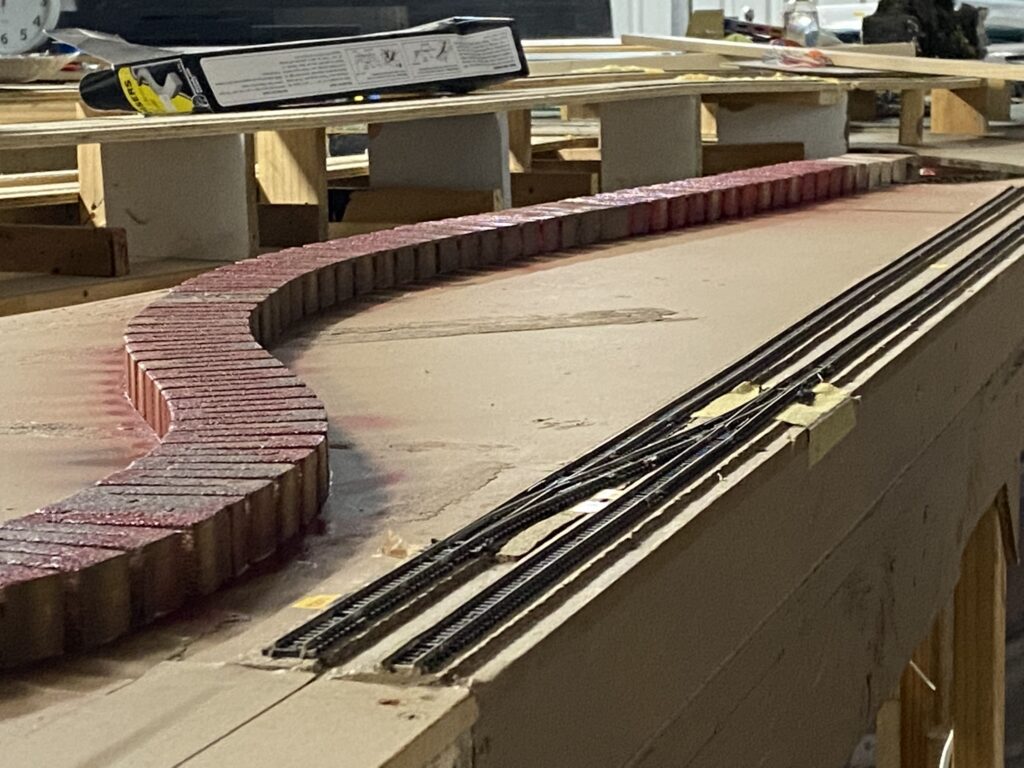
I paint the sub-roadbed a dirty brown
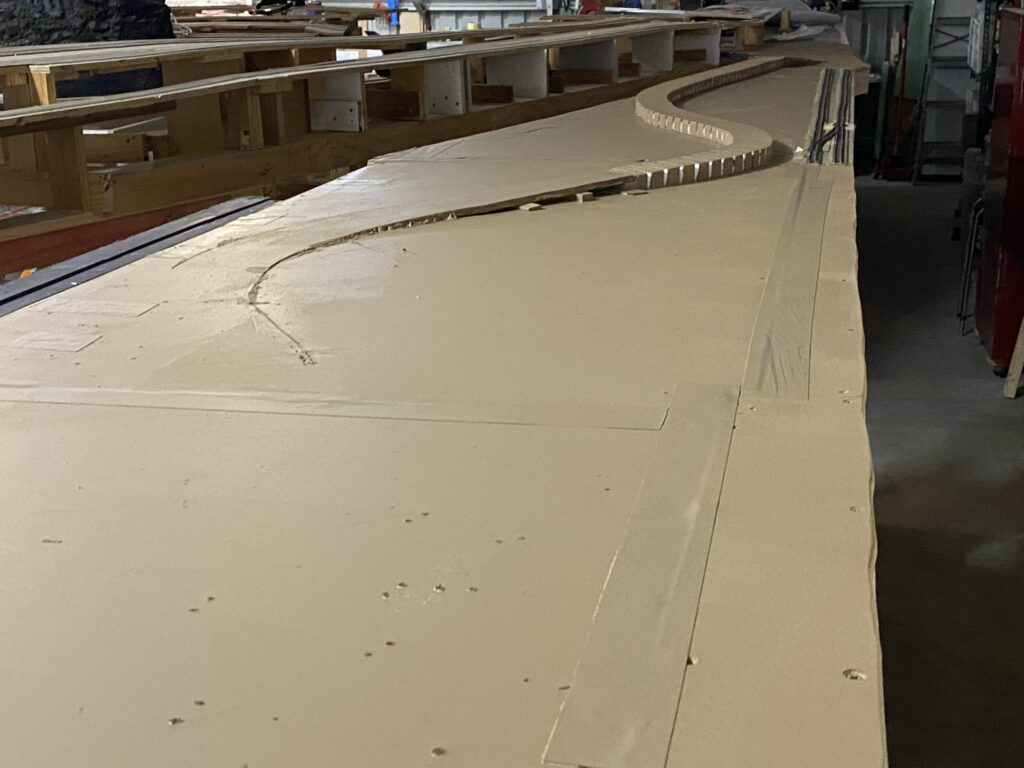
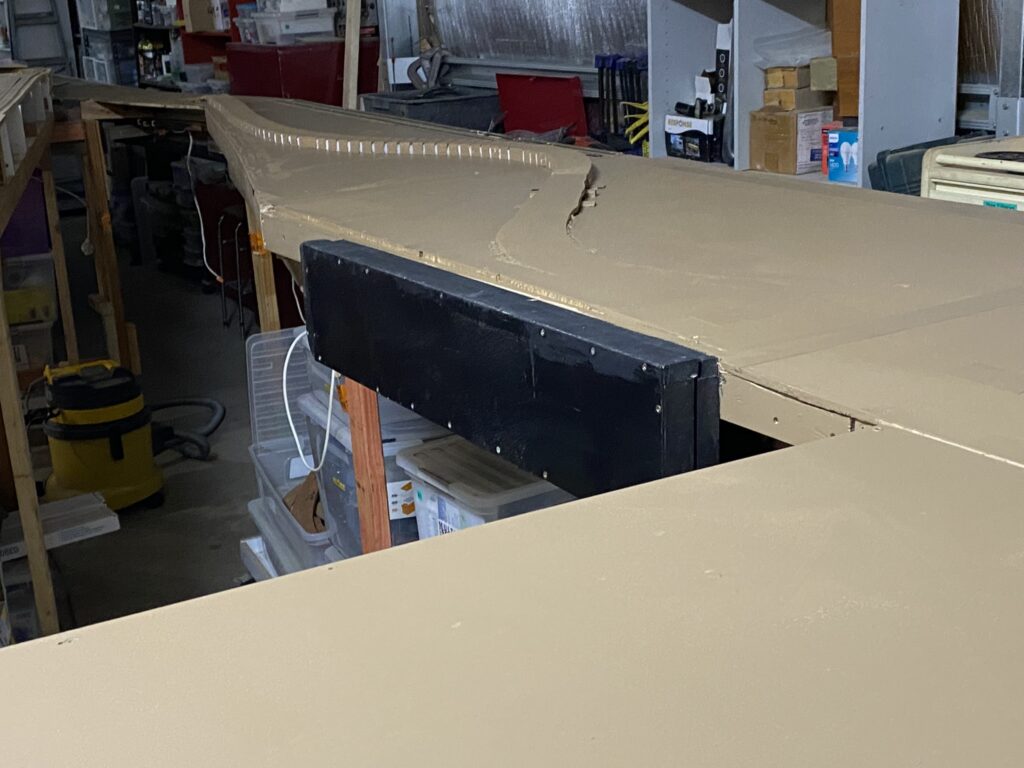
Struck a bit of a problem
First I discovered that the Gaugemaster GM500 Self Latching Relay did not work with DCC. I knew there was a GM500D DCC Relay but I had not realised that the GM500 would only work with analog connections. So I have ordered some GM500D’s from Hattons, but the Royal Mail is taking an uncharacteristic long time to arrive in Australia.
In the meantime I switched from NCE Snap-Its to DCC Concepts SX Accessory Decoders, which have the extra SPST switches, provided by the GM500D, built in. Unfortunately at the same time the temperatures in Perth shot up to 40°C and my LED lights started giving me false readings. On top of that I already had a situation where a number of NCE BD-20 block detectors were giving false readings.
At that stage I threw up my hands in horror and started work on creating the Big 10 Curve on modules 7 & 8.
It had also become apparent that using an oval of track about 11 meters (36′) long was too big to be of use as a test track. It just took too long for a train to complete the loop. Consequently I decided to add a temporary loop of track as can be seen in the following photographs.

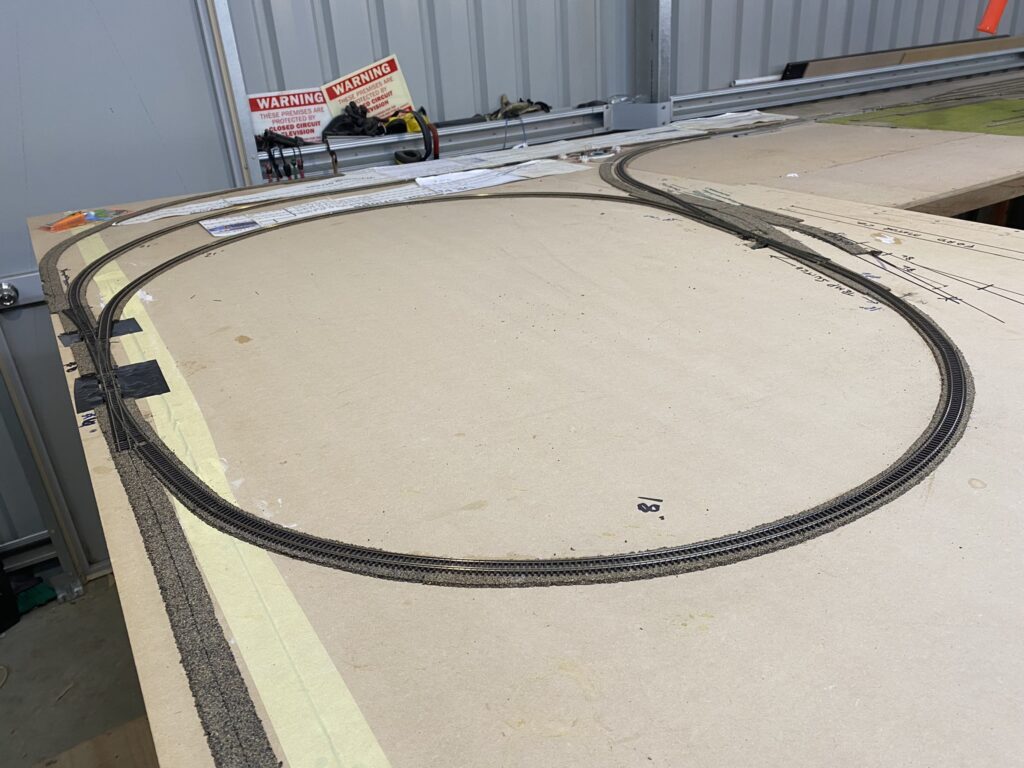
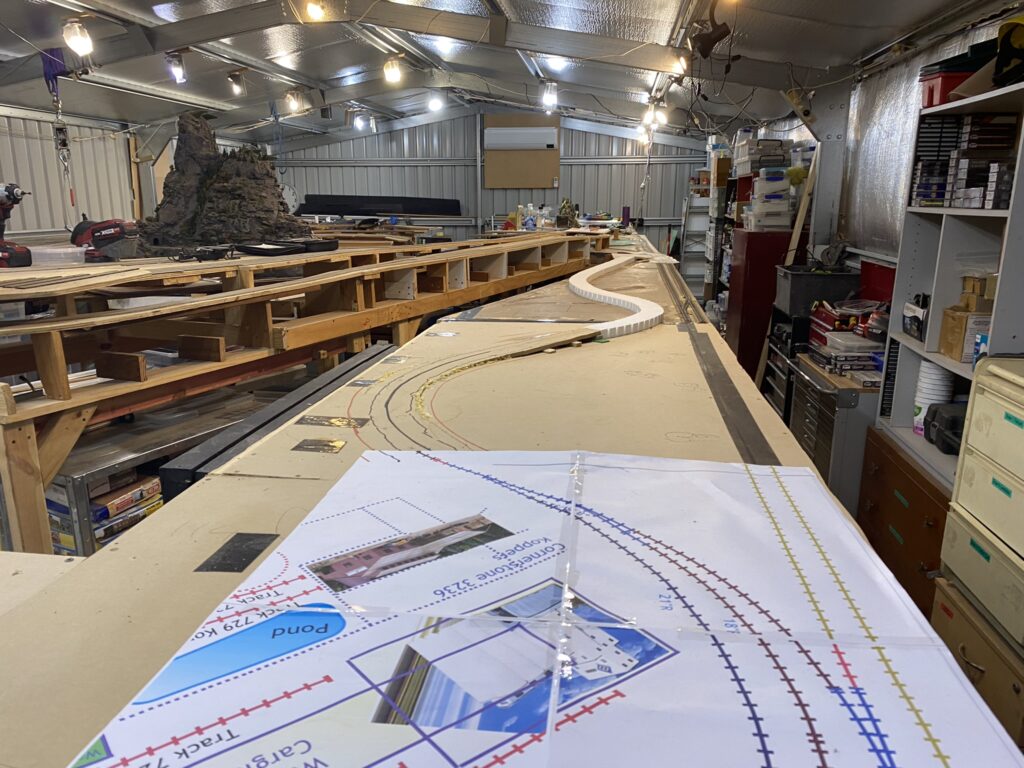
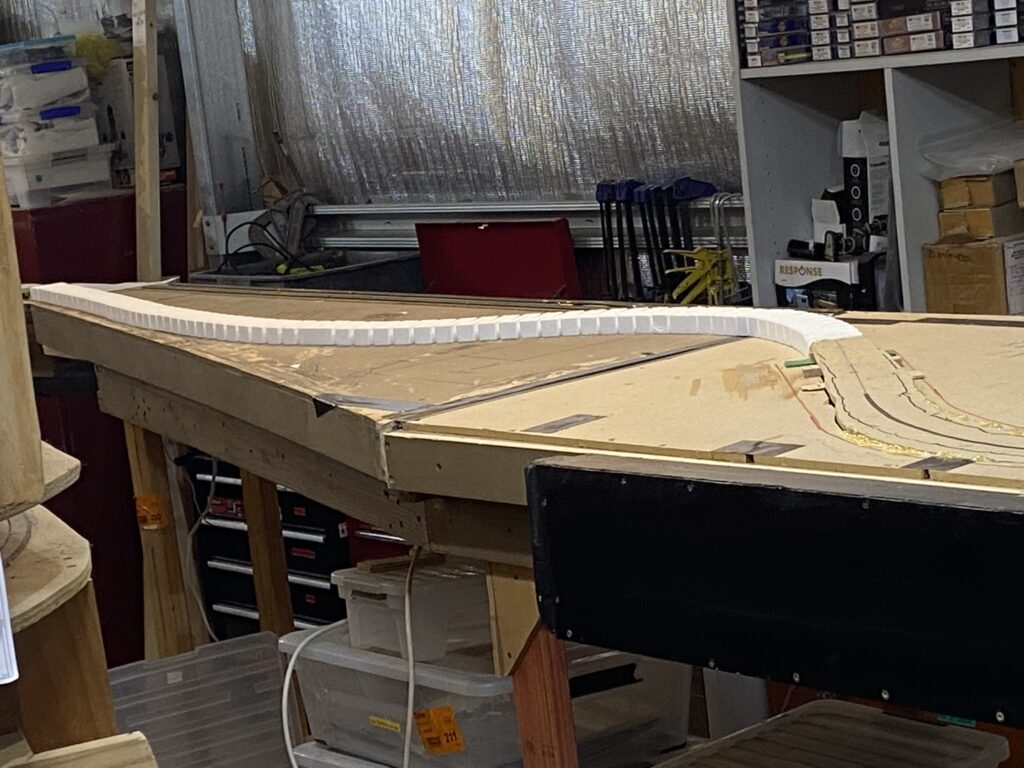
Once I have finished painting the sub roadbed on the baseboard I will return to wiring the South Denver Control Panel and hopefully the GM500D relays will arrive soon. I will also restart speed matching my locomotives using JMRI Decoder Pro, as well as weighting my rolling stock and coupler matching.
Note #1: Successful First Installation of a Group of Devices in the Turnout Control System
Tonight I installed the first Snap-It Accessory Decoder and it actually worked!
Furthermore it was not a standard Peco point motor installation. It was a Kato crossover using:
- Track Power from a Tam Valley 12v 5amp Accessory Booster
- Kato Scissors Crossing (with 4 point motors) Turnout
- NCE Snap-It Single Module
- External 470u 25v Capacitor added to the NCE Snap-It
- DCC Concepts DCD-SDC adapter from 3 wire to Kato 2 wire
- Single Pole Momentary contact micro switch
The turnout responded 100% correctly once I added the extra 470u capacitor. The Turnout is switched by:
- Toggling the momentary contact toggle switch OR
- Selecting Accessory Decoder 171 on the NCE Power Pro Hammer Head
Still to install in this first “Turnout Control System” process:
- Gaugemaster GM500 Self Latching Relay
- Two 3mm LEDs on the control panel to indicate which route has been thrown
The Track Plan is Updated
For 6 months or more I have been working on updating the Denver’s RailRoads track plan. Initially I wanted to improve the Denver rail yards and to provide UP and CBQ with their own yard (be it that they had to share) separate from Rio Grande’s North Yard. I then decided that I had too much yard and not enough scenic hills and mountains. To rectify this issue I decided to move the East Denver Belt Line and replace it with Rio Grande’s Big 10 Curve and Pinecliff station. This will give me a large open area of mainly just scenery, which the layout plan was lacking.
In order to re-establish the East Denver Belt Line industries I (a) deleted the Cherokee power station from East Denver and replaced it with the, now discontinued, Arapahoe power station in South Denver, (b) kept the Koppers crossties and utility poles operation in the corner of module 7 and (c) abandoned the Globe Smelter. All of the other industries, including Denver Union Stockyards and the Conoco Refinery, will fit between the new Rio Grande and UP/Burlington yards. In real life they are in that location but not so compressed!
I also improved the entrance and exit to the Salt Lake City return loop and staging tracks and their relationship with Glenwood Springs and its industries (which really exist but unfortunately are not railroad served). On the Craig branch I also swapped out the Springboat Springs station stop for Phippsburg and added the Edna mine which was the prototype for Walthers New River Mining Co kit, which I plan to use.
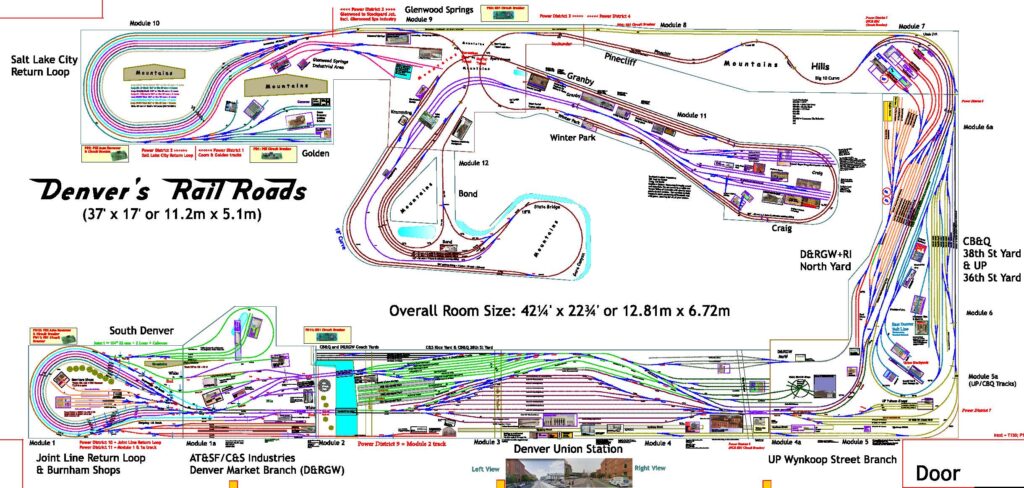
Kato to the rescue
I finally got fed up trying to run trains at low speeds over the Peco scissors turnout and decided to replace it with a Kato unit. During the dismantling of the Peco unit I found one of the wires to one of the Dual Frog Juicers was broken. This was almost certainly the reason why Locos would not cross the Peco scissors at slow speeds without stalling. However I decided to continue with the swap as I saved 4 point motors and 2 dual frog juicers for future use. The Kato unit is a single point motor which throws the rails to either straight through, or crossed. How simple!

I did a few more jobs before Perth’s 40 degree plus Christmas drove me indoors! . . .
